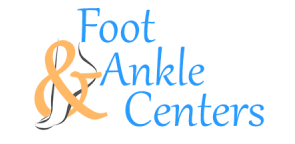Our Sports Medicine Podiatrist Specializes in Sports Related Foot & Ankle Injuries
Sports Medicine Foot & Ankle Doctor
Based on findings by the American Academy of Orthopedic Surgeons, a quarter of sports-related injuries pertain to the foot and ankle. Athletes engaged in running and jumping activities usually face an elevated susceptibility to such injuries.
Physical activities such as running, basketball, soccer, football, and dancing exert significant performance requirements on the feet, frequently leading to a higher incidence of foot and ankle injuries.
Achilles Tendinitis
A common foot & ankle condition we see and treat at Rebound is Achilles tendinitis, a condition that affects the Achilles tendon, the largest tendon in the body. Like many musculoskeletal injuries, it typically occurs because of overuse (often sports-related) and degeneration or wearing down with age and time.
Plantar Fasciitis
This situation arises when excessive stress is absorbed by the plantar fascia, a band of tissues that provides support to the arch of the foot. When these tissues undergo strain due to activities such as running, inflammation occurs, leading to discomfort in the heel's underside.
Stress Fractures
Sports like running, basketball, tennis, gymnastics, and dance tend to elevate the vulnerability of athletes to ankle and foot stress fractures due to the repetitive strain imposed on these areas.
A lack of conditioning, proper equipment, or technique can also lead to foot and ankle pain and disrupt the mechanics of the foot and ankle, potentially resulting in a stress fracture. Unlike a complete fracture, which involves a broken bone, a stress fracture refers to a small crack in the bone.
Ankle Sprain
Similar to other types of injuries, a sprained ankle can range from being relatively mild, resulting in slight discomfort, to more severe cases that hinder walking and standing due to intense pain. In all instances of ankle sprains, the injury occurs from the twisting of the foot, leading to harm to the ligaments within the ankle.
Inversion ankle sprains are the most common type and are caused by twisting the foot inward, resulting in damage to the outer ligaments as they are stretched. Eversion sprains, caused by twisting the foot outward, usually cause more severe damage to the inside ankle ligaments.
Neuroma
Experiencing pain in the ball of your foot? Tingling and numbness? These are symptoms that a foot & ankle doctor often associates with a neuroma — a condition involving a pinched nerve in the foot. The primary symptom that individuals with a neuroma encounter is pain between the toes while walking.
While there is no exact cause, many different things may play a role in the development of a neuroma, such as flat feet or feet with high arches, overuse or stress, shoe size and style, and trauma. These factors may cause inflammation, instability, and stress, which may lead to a neuroma.
For many, non-surgical treatment is common. Recommended treatment may include finding more appropriate/supportive footwear, using orthotic inserts, or corticosteroid injections to reduce inflammation.
Heel Spur
It is a calcium deposit that results in a bony protrusion on the heel bone, causing foot and ankle pain. When the plantar fascia, a band of fibrous tissues that run along the bottom of the foot from the heel to forefoot, stretches away from the heel. Athletes with either very flat feet or high arches may be more prone to this condition, which can manifest as persistent foot and ankle pain.
Additional elements that can play a role are jogging on unforgiving terrain, wearing inappropriate shoes, one's age or body weight, a walking manner that exerts pressure on the heel, and even diabetes. The heel spurs can lead to intense discomfort in the back part of the foot, particularly during standing or walking.
Most people with this condition are treated non-surgically by either one of the following or a combination — physical therapy, heel stretching exercises, orthotics, muscle and tendon taping, and anti-inflammatory medication.


